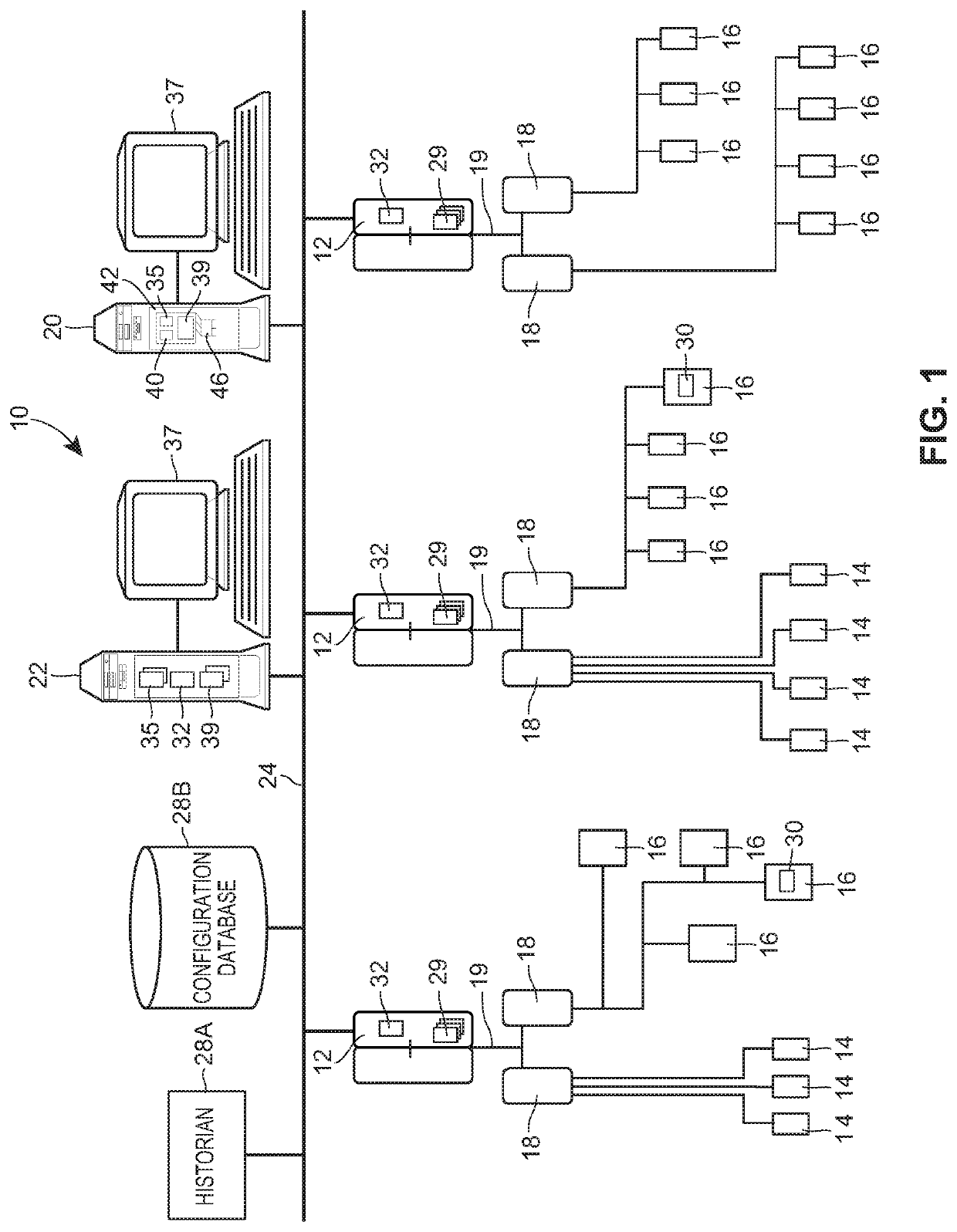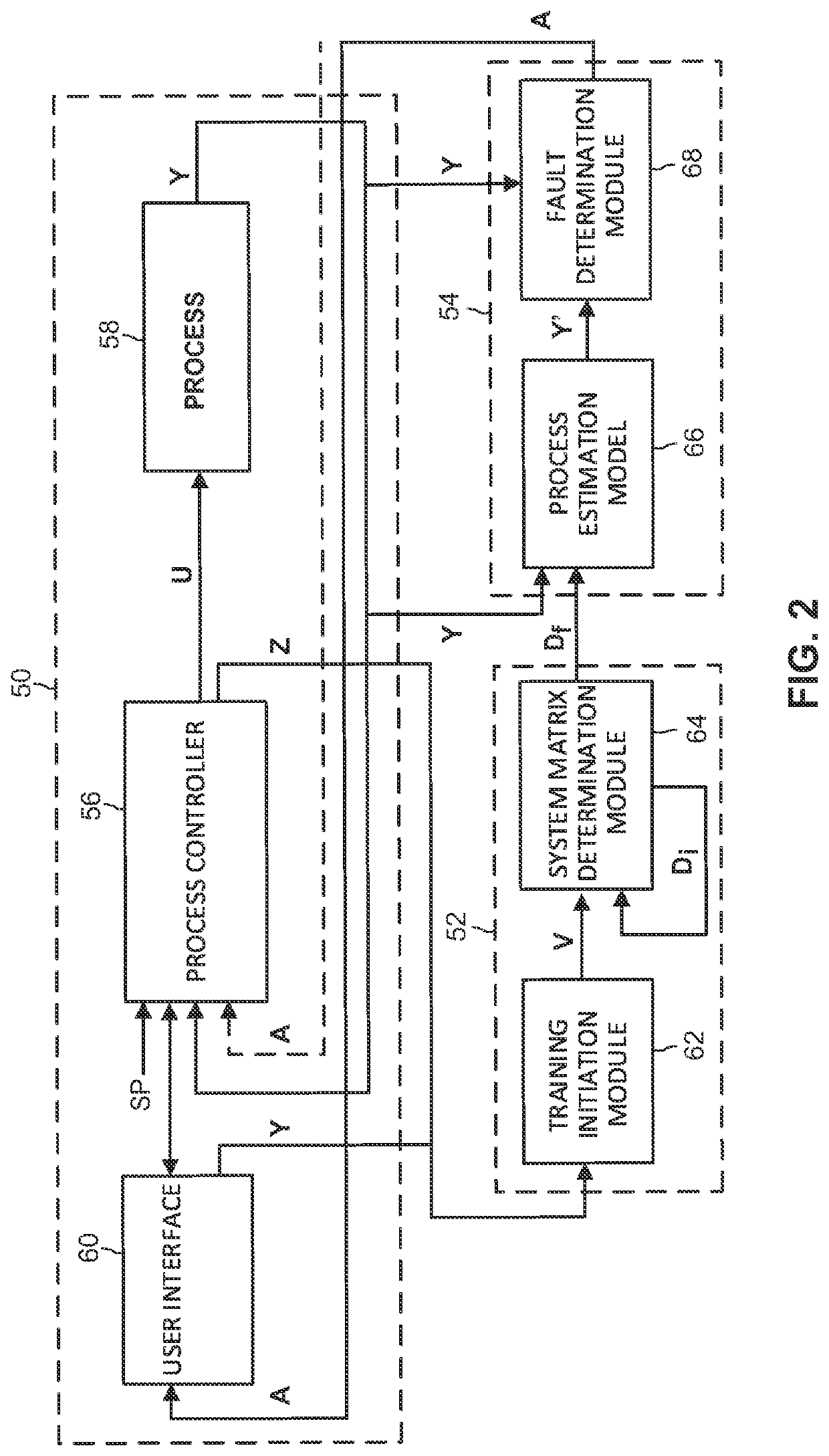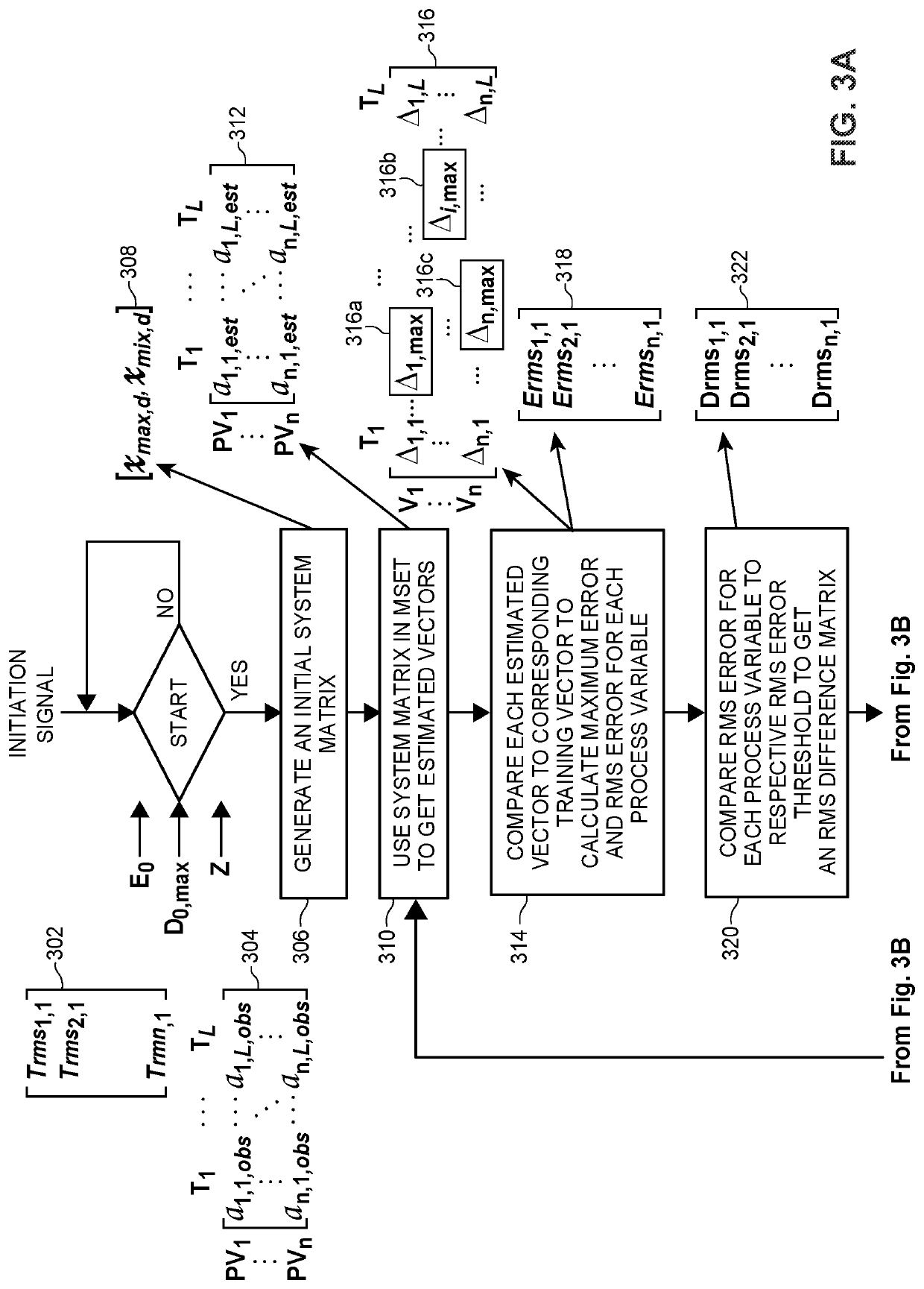Successive maximum error reduction
a maximum error and reduction technology, applied in the field of process plants, can solve problems such as reducing operator confusion, plant abnormal situation, and halting or stalling of sequence programs, and achieve the effect of increasing the accuracy of the mset and reducing operator confusion
- Summary
- Abstract
- Description
- Claims
- Application Information
AI Technical Summary
Benefits of technology
Problems solved by technology
Method used
Image
Examples
Embodiment Construction
[0030]FIG. 1 illustrates a process plant 10 having an example control network, such as that associated with a power generation plant, in which the improved training technique may be implemented. In particular, process plant 10 of FIG. 1 includes a distributed process control system, having one or more controllers 12, each of which is connected to one or more field devices 14 and 16 via a bus 19 and input / output (I / O) devices or cards 18 which may be, for example, Fieldbus interfaces, Profibus interfaces, HART interfaces, standard 4-20 ma interfaces, etc. The bus 19 can be any type of communication media such as a serial bus, a wireless bus or connection, or the I / O cards 18 can be located physically at the process controllers 12 or can be located remotely. The controllers 12 are also coupled to one or more host or operator workstations 20 and 22 via a data highway 24 which may be, for example, an Ethernet link. Databases 28A and 28B may be connected to the data highway 24 and operat...
PUM
 Login to View More
Login to View More Abstract
Description
Claims
Application Information
 Login to View More
Login to View More - R&D
- Intellectual Property
- Life Sciences
- Materials
- Tech Scout
- Unparalleled Data Quality
- Higher Quality Content
- 60% Fewer Hallucinations
Browse by: Latest US Patents, China's latest patents, Technical Efficacy Thesaurus, Application Domain, Technology Topic, Popular Technical Reports.
© 2025 PatSnap. All rights reserved.Legal|Privacy policy|Modern Slavery Act Transparency Statement|Sitemap|About US| Contact US: help@patsnap.com



